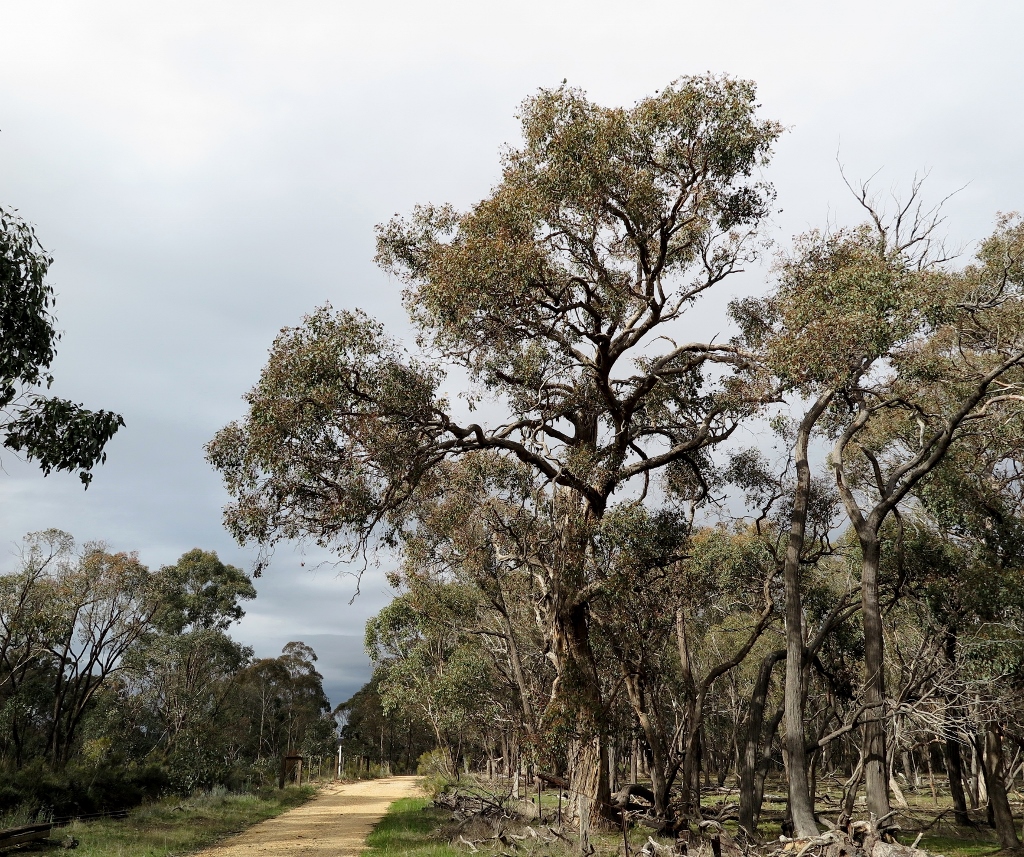‘Environmental infrastructure’ is one of those phrases that makes the eyes glaze over, but actually, all it means is: things that help you enjoy good places. That is, bush tracks, ways of enjoying parks and gardens, and so on. As we’ve suggested many times, money spent on such things is not a cost, it’s an investment. If COVID 19 has made anything clear, that’s it: healthy natural places are essential for people’s mental and physical wellbeing, and it’s about time government budgets acknowledged this fact.

Castlemaine to Maldon walking track: money spent on providing access to healthy environments is an investment, not a cost.
FOBIF has made a short submission to Parliament’s enquiry into ‘environmental infrastructure.’ The gist of our submission is below:
Given the emphasis on population increase in the terms of reference, we note that the population of Victoria has increased by over a million in the last 12 years. In that time, Parks Victoria’s staffing has remained more or less frozen at 2008 levels. Though the situation at DELWP is more complex, given its fire control responsibilities, we believe that as far as constructive management of bushland is concerned the situation is similar. We urge the committee to seriously examine the nature of funding of public land management.
Funding for public land managers is a key factor in the quality of environmental infrastructure close to townships, for very simple reasons:
- Management of tracks and trails has to be more intensive: our observation is that road management by Parks Victoria and DELWP is often crude and destructive of adjacent bushland. We are forced to believe that this is a consequence of using untrained, unsupervised or simply uninformed personnel. Of course, the cure for this is increased funding.
- Environments near townships need very careful management for fire prevention and mitigation: it’s not possible to light a large area ‘fuel reduction burn’ and let it do its thing inside the fire perimeter, because proximity to houses always poses a risk, and in any case large burned areas are a negative effect on amenity. The solution to this is treatment in much smaller patches…which costs money.
- Nuisance behaviours like rubbish dumping and rogue trail bike riding are on the increase. Without a more frequent ranger presence these are bound to increase. Ranger numbers are deplorably low.
We have two further points:
- Landcare groups in Castlemaine and Campbells creek have engaged in ambitious revegetation programs over the last two decades, with spectacularly successful results, including two widely used Creek trails. These groups need support.
- We support the introduction of indigenous co management into our public lands, and specifically the ‘Walking together’ program designed to reform the management of Kalimna Park, adjacent to Castlemaine.




 Click on image for info/order page
Click on image for info/order page Click on image for info/order page
Click on image for info/order page Click on image for info/order page
Click on image for info/order page





















